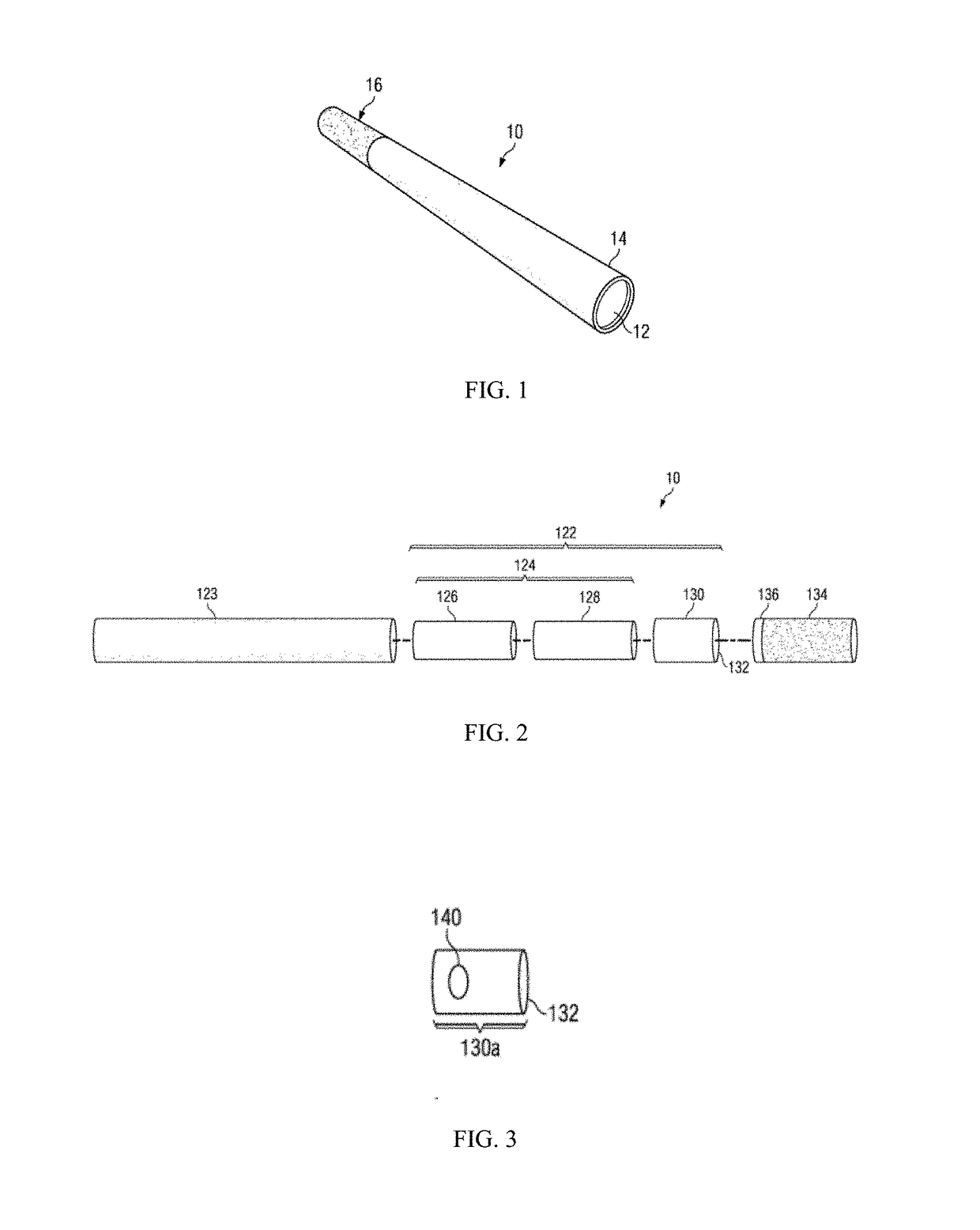Agents and methods for modulating the sensory impact of tobacco or herbal smoke
a technology of sensory impact and agents, applied in the field of agents and methods for modulating the sensory impact of tobacco or herbal smoke, can solve the problems of nicotine being the fundamental cause of addiction among tobacco users, and having serious side effects across all systems of the body
- Summary
- Abstract
- Description
- Claims
- Application Information
AI Technical Summary
Benefits of technology
Problems solved by technology
Method used
Image
Examples
example 1
[0058]Aframomum melegueta seeds (200 grams), and powdered galangal root, or ethanolic galangal extracts, were pulverized in a coffee grinder and extracted through a heated extraction process with ethanol for 3 hours. The extract was filtered in three separate steps. Using a syringe and needle, 0.1 ml was injected into a light cigarette, withdrawing the needle while dispensing the extract from the syringe down the length of the tobacco column. After being allowed to dry, the cigarette displayed an intensified throat sensation, mimicking a key element of the sensory impact of a stronger cigarette.
example 2
[0059]Aframomum melegueta seeds (2.4 kg), thyme leaves (7.4 kg), rosemary (6.6 kg), and powdered galangal root (8.1 kg), were pulverized in a coffee grinder and extracted through a heated extraction process with 106 liters of methanol for 3 hours. The extract was filtered in three separate steps. This extract was applied to tea leaves as a tobacco substitute. Application was by fine spray over the non-tobacco herbal cut-rag which was then mixed and tumbled to coat evenly. The treated cut-rag was dried in a commercial grade oven for 4 hours. Following the drying process, the cut-rag was sprayed with propylene glycol to reach a moisture level of approximately 18%. The non-tobacco herbal cut-rag was manufactured into cigarettes on a Hauni Protos high speed cigarette making line. The cigarettes displayed an intensified throat sensation, mimicking a key element of the sensory impact of a nicotine containing tobacco cigarette.
example 3
[0060]Aframomum melegueta seeds (200 grams), and powdered galangal root, or ethanolic galangal extracts, were pulverized in a coffee grinder and extracted through a heated extraction process with methanol for 3 hours. The extract was filtered in three separate steps. This extract was applied to a very low nicotine (VLN) tobacco cut-rag with less than 0.04% nicotine. Application was by fine spray over the cut-rag which was then mixed and tumbled to coat evenly. The treated cut-rag was dried in a commercial grade oven for 4 hours. Following the drying process, the cut-rag was sprayed with propylene glycol to reach a moisture level of approximately 18%. The VLN cut-rag was hand-rolled into cigarettes, which displayed an intensified throat sensation, mimicking a key element of the sensory impact of a tobacco cigarette with regular level of nicotine content.
PUM
 Login to View More
Login to View More Abstract
Description
Claims
Application Information
 Login to View More
Login to View More - R&D
- Intellectual Property
- Life Sciences
- Materials
- Tech Scout
- Unparalleled Data Quality
- Higher Quality Content
- 60% Fewer Hallucinations
Browse by: Latest US Patents, China's latest patents, Technical Efficacy Thesaurus, Application Domain, Technology Topic, Popular Technical Reports.
© 2025 PatSnap. All rights reserved.Legal|Privacy policy|Modern Slavery Act Transparency Statement|Sitemap|About US| Contact US: help@patsnap.com


